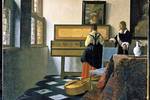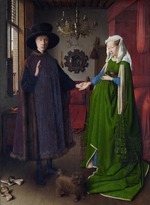Friday
Dec272013
after "Tim's Vermeer"
 Friday, December 27, 2013 at 11:48PM
Friday, December 27, 2013 at 11:48PM If I could put my life on hold for a year, I might write a book on art and technology. The thesis would be that every innovation in visual art can be traced to a technological innovation. I hypothesize that this is true not just for the modern era but for every era, where the technology may be related to paint manufacturing, optics, printing, or photography.
The inventor Tim Jenison has kindly taken care of one of the chapters, as documented in the fascinating Tim’s Vermeer, which I saw today (it’s in limited release to be Oscar-eligible, coming out in January). His thesis is that the uncanny photographic quality of Vermeer’s paintings (200 years avant la lettre) can only come from a mechanical tool such as a camera obscura. What if Vemeer is not a visual genius of light and color but an inventor? What if this young, mysterious figure recognized the ability of optical technology to document everyday life, much as photographers did much, much later? I feel strongly that the uncanniness always comes from technology rather than the quirky ability of a single artist. This helps to explain why those drawn to puzzles/formal devices are drawn to Vermeer — from Proust to Greenaway (the fantastic Zed & Two Noughts) to the Blue Balliett YA novel. (I haven’t read or seen the book/movie Girl with a Pearl Earring).
I agree that’s it strange that there’s no account of finding, say, a trove of lenses or his atelier outfitted unusually. But his career is odd: his family was supported by his in-laws; his output was very limited; he did not take on pupils (who might have shared his technique). It is not hard to imagine him constructing set-pieces then documenting them with optical-device assistance.
The film reminded me of one of my favorite old pictures, the Arnolfini marriage painting by Jan van Eyck, which also has a strong uncanny quality.
It features a convex mirror in the center, suggesting an optical device was used here, too, but the perspective here is geometrical rather than naturalistic. I tend to think much of the uncanniness is due to the novel use of oil paint (new at this time and capable of more “realistic” light and shade) with the older perspective system. (BTW, as in the Vermeer pictures, the window is on the left — why is the window/light always on the left?)
When we observe the artifacts of one medium/technology crossing over to another (as in the glints of light or outlines of objects in Vermeer — these are lens artifacts carrying over to the paintings) — we sense the uncanny. We perceive this in the machines of Duchamp and Picabia, in the prints of Warhol.



Reader Comments